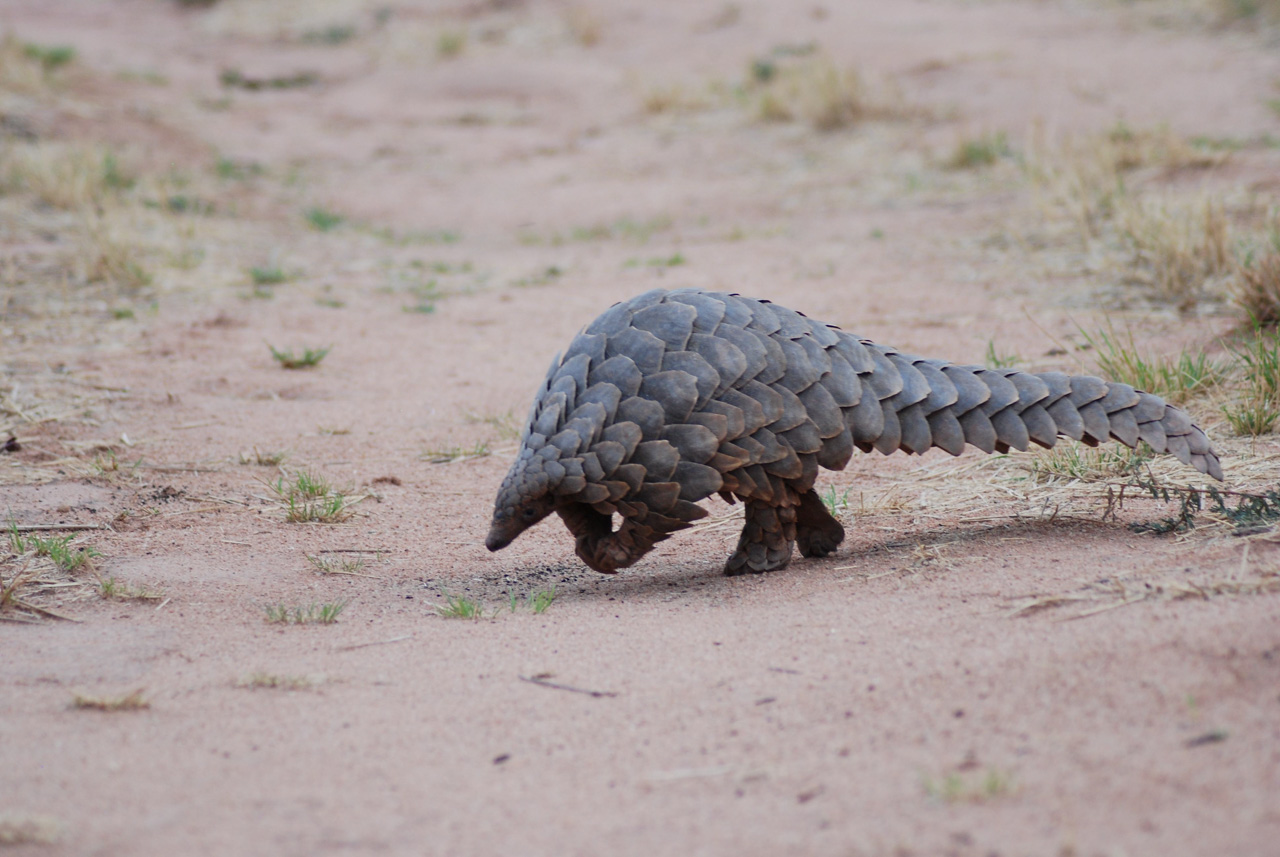- The study pulled together information on markets, prices and hunting methods for pangolins from research in 14 countries in Africa.
- Pangolins are hunted for their meat in some African countries, and their scales are used in traditional medicine, both locally and in several Asian countries, including China.
- The researchers found that as many as 2.71 million pangolins from three species are killed every year across six Central African countries – at least a 145 percent increase since before 2000.
- They recommend better enforcement of the 2016 CITES ban across the entire supply chain, from Africa to Asia.
Ballooning demand for pangolin scales and meat has driven the hunting of these armored animals up at least 145 percent in Central Africa since before 2000, according to a new study published online July 11 by the journal Conservation Letters.
Pangolins have been tagged as “the world’s most heavily trafficked wild mammal,” often for the keratin plates that protect it and are used in Africa and Asia in traditional medicine. But until now, scientists didn’t know how big an impact that illegal trade was having on hunting in Central Africa.
“Overexploitation is one of the main pressures driving wildlife, like the pangolins, closer to extinction, yet data to evaluate the pressures underlying species’ declines are scarce,” said Jörn Scharlemann, an ecologist at the University of Sussex in the U.K., in a statement.

To understand the scale of the problem, Scharlemann and his colleagues, representing 22 universities and institutions throughout Africa, Asia, Europe, and North America, pulled together information on markets, prices and hunting methods for pangolins from research in 14 countries in Africa.
“Collating data from local studies collected by hundreds of researchers allows us to provide vital information on the regional exploitation of African pangolins at a critical time for the survival of these species,” Scharlemann said. “Bringing these individual studies together allows us to see the bigger picture that can help inform conservation policy and provide the evidence to governments across the world required to step-up and take action.”
They found that as many as 2.71 million pangolins from three species are killed every year across six Central African countries – Cameroon, Central African Republic, Equatorial Guinea, Gabon, the Democratic Republic of Congo and the Republic of Congo. What’s more, the proportion of pangolins compared to other types of hunted animals is 50 times as much as it was four decades ago.
But what such numbers mean is still a bit of a mystery, in part because they’re so tough to study.
“Pangolins are extremely difficult to see, let alone monitor,” said Fiona Maisels, an ecologist with the Wildlife Conservation Society, in the statement. “They are nocturnal; in the daytime they are either underground or high up in trees, they do not call, make conspicuous nests, or provide us with easily recognizable dung piles.”

Those hurdles have hampered finding a critical piece of information about pangolins, Maisels added: “To date, we have no way of estimating how many still exist in the forests of Central Africa.”
The authors did find that 45 percent of the hunted pangolins that appeared in the research weren’t yet fully grown, leading them to conclude that the current level of hunting is unsustainable.
Currently, the three pangolin species found in Central Africa’s forests, along with one other found in southern Africa, are all listed as Vulnerable by IUCN. But closer to the epicenter of demand in Asia, their relatives aren’t faring as well. Numbers of the Chinese pangolin (Manis pentadactyla) have declined by 90 percent, and the IUCN considers all four Asian species either Endangered or Critically Endangered.
“Our new study shows that African pangolins are at risk,” said Daniel Ingram, the study’s lead author and a biologist at the University of Sussex. “We now have the opportunity to ensure that these species do not follow the severe declines of the Asian pangolins.”

The researchers postulate that rises in demand to fill the void in Asian markets left by the now-scarce Asian species could be a reason for the spike in pangolin prices the authors uncovered. In urban markets, the cost of a giant ground pangolin (Smutsia gigantea) in 2014 was 5.8 times as much as it was in 1993.
The Convention on International Trade in Endangered Species, or CITES, banned the international trade of pangolins in 2016. But, as the authors point out, that directive doesn’t come with the tools to enforce it. That’s left to the countries where the trade occurs.
“With hunting increasing, it is crucial we investigate how this links to the illegal wildlife trade,” Ingram said. “The engagement of governments and local people will be critical to the conservation of African pangolins.”
The study includes a recommendation to start by tackling local markets for pangolins and by identifying areas where hunting is unsustainable. But the researchers also write that enforcement and monitoring should occur throughout the supply chain, including Asia – and China in particular, where consumer demand is highest – before it’s too late.
“If we do not act now to better understand and protect these charismatic animals,” Ingram said, “we may lose them in the future.”
CITATIONS
- Challender, D. W., Waterman, C., & Baillie, J. E. (2014). Scaling up pangolin conservation. IUCN SSC Pangolin Specialist Group Conservation Action Plan. Zoological Society of London, London, UK.
- Ingram, D. J., Coad, L., Abernethy, K. A., Maisels, F., Stokes, E. J., Bobo, K. S., … & Holmern, T. (2017). Assessing Africa‐Wide Pangolin Exploitation by Scaling Local Data. Conservation Letters.
Banner image of a Temminck’s ground pangolin ©Tim Lewthwaite, courtesy of WCS.
FEEDBACK: Use this form to send a message to the author of this post. If you want to post a public comment, you can do that at the bottom of the page.